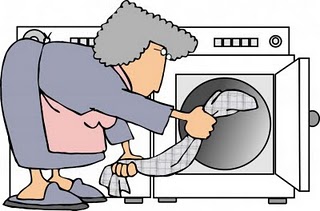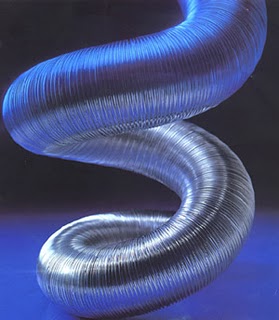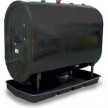Clothes Dryer Venting Question
Back in April 2009 I posted on Clothes Dryer Duct And Vent Safety. Today I received a question on that post.
Here is the question:
Anonymous said…
Thank you for the information. I have a venting
dilemma.In order to vent outside from the basement of my colonial with several additions, I either have to vent about 15 feet using 5 elbows, or 23 feet using 3 elbows.
I want to use stiff metal vents. I could get away with 2 elbows on the longer run if I use one bendable hosed in one section. I’m going through an old exterior wall cellar window that is now an interior wall, and then to the outside from the addition.
Which is safer if either?
Thanks, Mark
Hi Mark,
Thanks for your question.
The type and length of your dryer duct can have a significant effect on the efficiency of your dryer as well as increase or reduce the risk of a fire.
You’re correct to want to use metal duct pipe to vent your dryer. The most efficient and safest dryer ducts are the 4” smooth, rigid metal duct. The smooth pipe interior of these pipes reduces air flow drag and lint build up.
The flexible, white plastic hoses are a fire hazard; they become brittle from the heat and are also inefficient.
There are also the flexible metal hoses that can be used, although they tend to build up lint and are best used, for connecting the machine to your rigid metal duct-work through a dryerbox.
Clothes Dryer Venting
Local codes and ordinances must also be met. Consult your local building inspector to check local guidelines, and be aware that most OEM’s [Official Equipment manufacturers] recommend much longer duct runs in their manuals which goes against most areas codes.
The ICC [International Code council] is hopefully going to take this issue on and bring both sides closer together.
Your question: “I either have to vent about 15 feet using 5 elbows, or 23 feet using 3 elbows.”
Longer dryer duct runs significantly reduce the efficiency of your dryer which means it takes a lot longer for your clothes to dry.
If it is not possible to locate you dryer closer to an exterior wall then the 23 foot run is your best solution with either a booster fan or a high-output dryer.
Here’s why:
Codes typically require that the dryer duct be no more than 35 feet long.
You need to DEDUCT 2.5 feet off the 35 feet for every 45-degree bend and DEDUCT 5 feet for every 90-degree bend. Your two options provide you with a dryer run of 40 feet and 38 feet.
If the duct is more than 35 feet in length, the system requires a booster fan or a high-output dryer.
A dryer vent booster fan can increase the life of your dryer, increase the dryer’s efficiency, and decrease the fire hazard in your home.
One option would for you to use wider sweeping elbows like the Dryer-ELL to reduce the elbow restrictions.
According to the International Mechanics Code.
504.6.4 Duct length:
The maximum allowable exhaust duct length shall be determined by one of the methods specified in Sections 504.6.4.1 or 504.6.4.2. [I have included both below]
504.6.4.1 Specified length:
The maximum length of the exhaust duct shall be 35 feet (10668 mm) from the connection to the transition duct from the dryer to the outlet terminal.
The code official shall be provided with a copy of the installation instructions for the make and model of the dryer. Where the exhaust duct is to be concealed, the installation instructions shall be provided to the code official prior to the concealment inspection. In the absence of fitting equivalent length calculations from the clothes dryer manufacturer, Table 504.6.4.1 shall be utilized.
~ concord carpenter




















